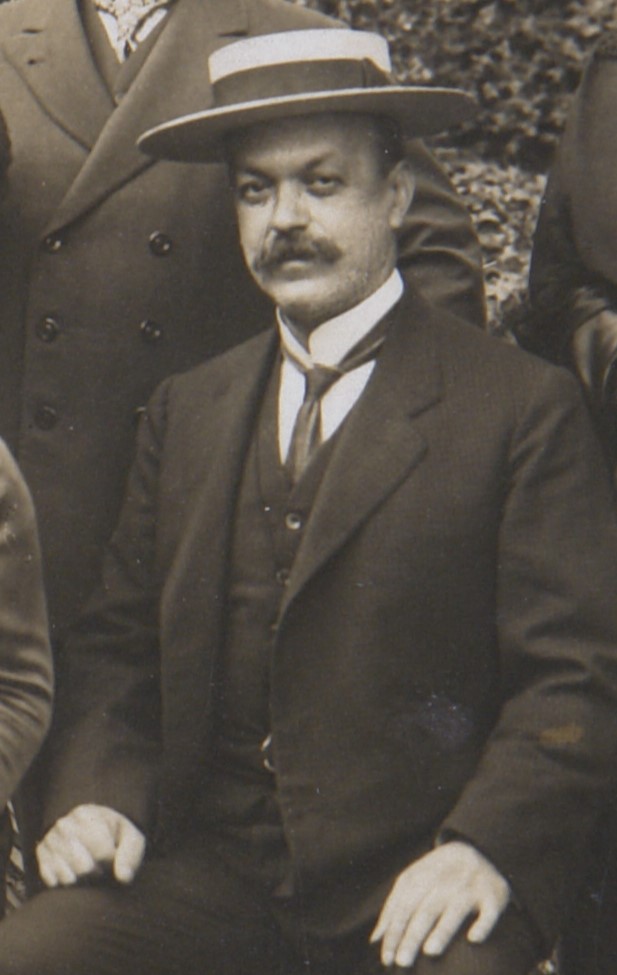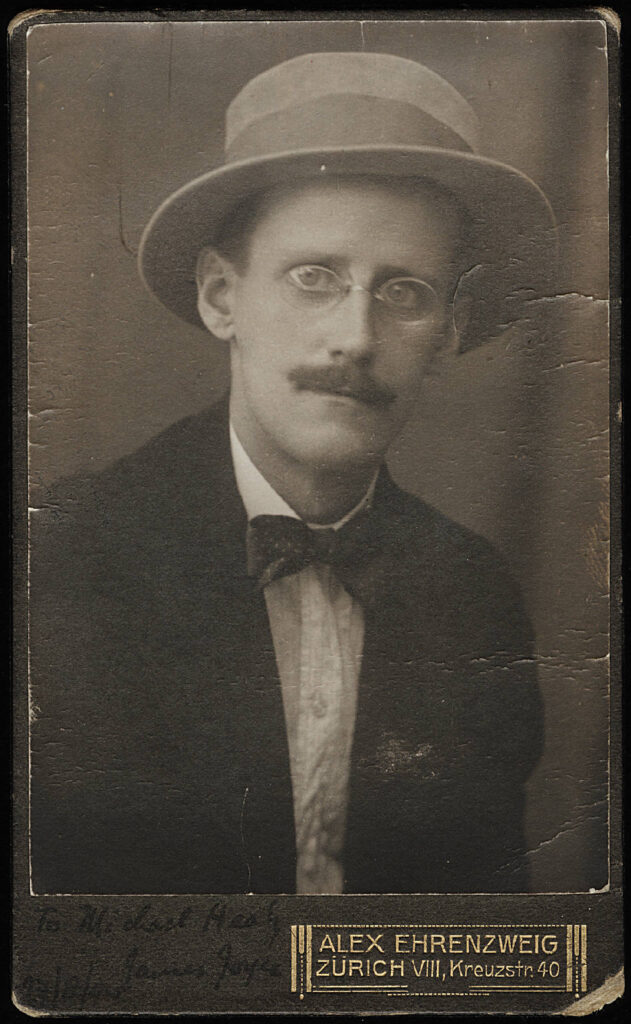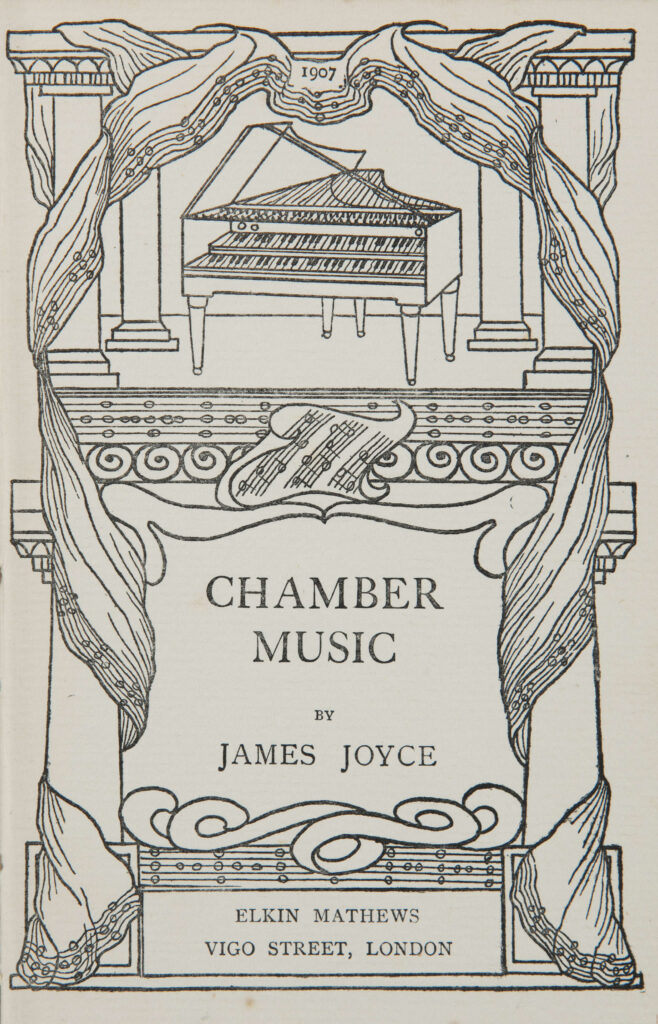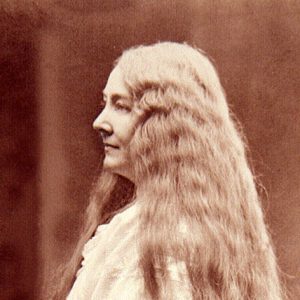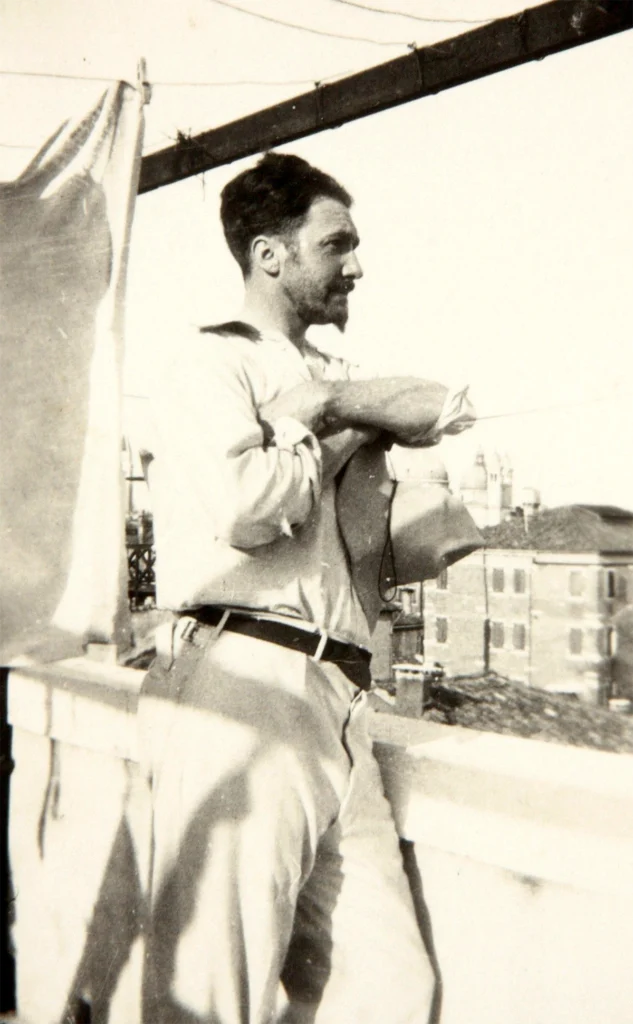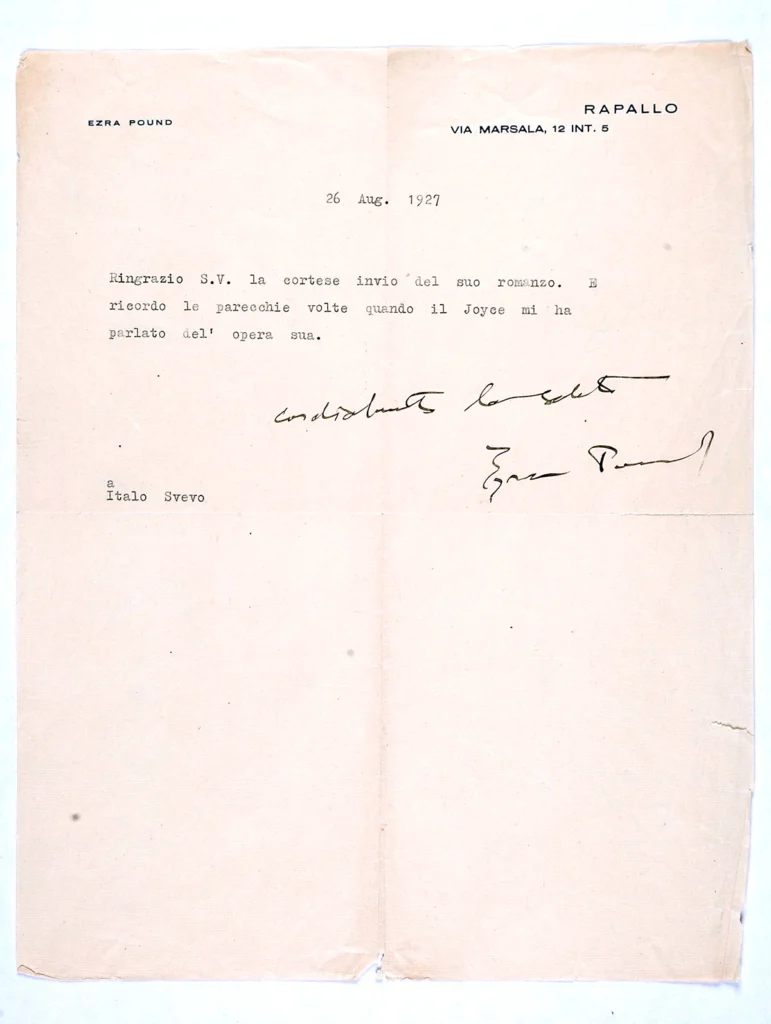Italo Svevo con il suocero, i cognati Oberti di Valnera e Bliznakoff e altri quattro amici sul campo di bocce della villa Veneziani. > Museo Svevo – Fondo fotografico
1907
Neglected Writers
When Svevo and Joyce met in 1907, they were not yet celebrities. The former, aged 45, had given up writing and was in need of an English teacher; the latter, aged 25, taught English, was about to publish his first ever book, Chamber Music, was fighting back against his publisher’s objections to Dubliners and had put the composition of Portrait on hold. Svevo found in Joyce an excellent teacher and an ideal interlocutor, while Joyce found in Svevo a witty intellectual and a writer whom he sincerely admired. The two gave each other their works to read. Joyce was enthusiastic about Senilità, Svevo was enchanted by the final short story of Dubliners, ‘The Dead’, which the Irishman read to him and his wife on 20th September 1907. Livia, overcome with emotion, picked a rose from the garden and handed it to Joyce.
Heartfelt condolences
Postcard
Letter from James Joyce to Livia Veneziani Schmitz, written in another hand under dictation, Paris, 24th (...) OPEN
1924
1931
Friends, wifes, prefaces
In Paris, Joyce did his utmost to ensure that Svevo’s work obtained the recognition it deserved.
He presented Zeno’s Conscience to critics such as Larbaud and Crémieux, who admired and sponsored it in France. Despite the esteem and the display of playfulness between the two writers, when, after Svevo’s death, Livia Veneziani Schmitz asked him to write the preface for the English edition of Senilità (the title As a Man Grows Older was Joyce’s idea) Joyce refused. In a few letters to his brother, his irritation towards Mrs Schmitz (more than Svevo himself), who was still pressuring him, clearly comes across. He complained that he had never been welcomed into Villa Veneziani as anything other than an employee and observed that Mrs Schmitz became longsighted whenever she met Nora in the street. In the end, the preface was written by Stanislaus.
Below: Greeting cards from James Joyce to Italo Svevo and family, between 1924 and 1931. Svevo wrote in one of the pages dedicated to his friend: “As the good Englishman he does not want to be, he is also capable of sending a card at the end of the year, an effort which earns him one’s forgiveness for his enormous negligence accumulated over the past 365 days and that which will accumulate over the 365 days that begin with that day”
> coll. Museo Svevo – Epistolario
A preface to Senilità
Postcard
Letter from Lucia Joyce to Livia Veneziani Schmitz, Paris, 25th January 1931: «Dear Mrs. Schmitz, […] (...) OPEN
“The resurrection of Lazarus”
Postcard
Letter from James Joyce to Italo Svevo, Paris, 30 January 1924: “Thank you for the novel (...) OPEN
Credits and debts
Italo Svevo is considered a chief model and main source of inspiration for Leopold Bloom in Ulysses. Both are Jews of Hungarian origin, with olive complexion, converted to Catholicism ‘for love’, with only one daughter, a name which is translated from one language to another, and full of kindness and a sense of humour, which, as Saba wrote when speaking of Svevo, “is the extreme form of kind-heartedness”.
Svevo gave Joyce abundant information about the Jewish religion and Jewish traditions. In his 1955 conference The Meeting of Joyce and Svevo Stannie wrote that, during a lesson in Villa Veneziani, Svevo said to him: “Tell me something about Irishmen… Something intimate, something not generally known. You know, your brother has been asking me so many questions about Jews that I want to get even with him”.
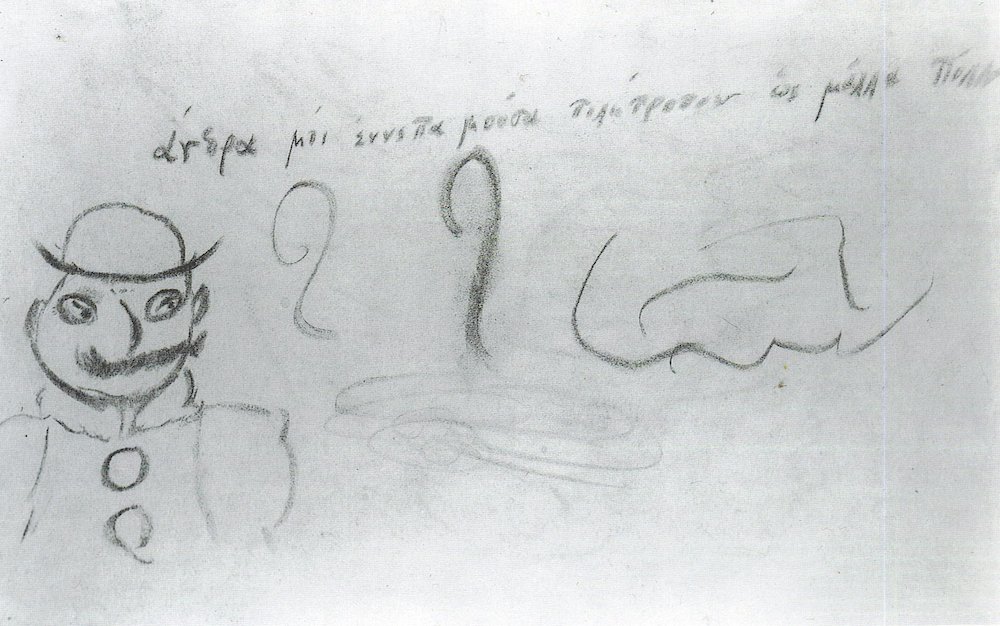
Ulysses, alias “Sua Mare Grega”
Postcard
Letter from James Joyce to Italo Svevo, Paris, 5 January 1921: “As I urgently need these (...) OPEN
- Display Case
James Joyce in Paris with Philippe Soupault around 1930 > Buffalo University (NY) James Joyce Collection
1921
«The Merchant of Gerundii»
On 5th January 1921, Joyce sent an amusing letter to Svevo from Paris in which he asked to bring him some notes that he had left in Trieste and which he needed to complete the ‘Circe’ episode of Ulysses. The text is written in a mix of Italian and Triestino and testifies not only to Joyce’s extraordinary linguistic talent, but also to the friendship that existed between the two writers. Svevo was to pay homage to Joyce in a conference held in 1927 at the headquarters of the magazine “Il Convegno”, in which he proposed an interesting reading of Ulysses and showed understanding for the troubled existence of his former teacher, his “merchant of gerundii”.
“A portrait of the artist as an old man”
Postcard
Postcard from James Joyce to Italo Svevo, Galway, 26 July 1912. The picture postcard, sent from (...) OPEN


